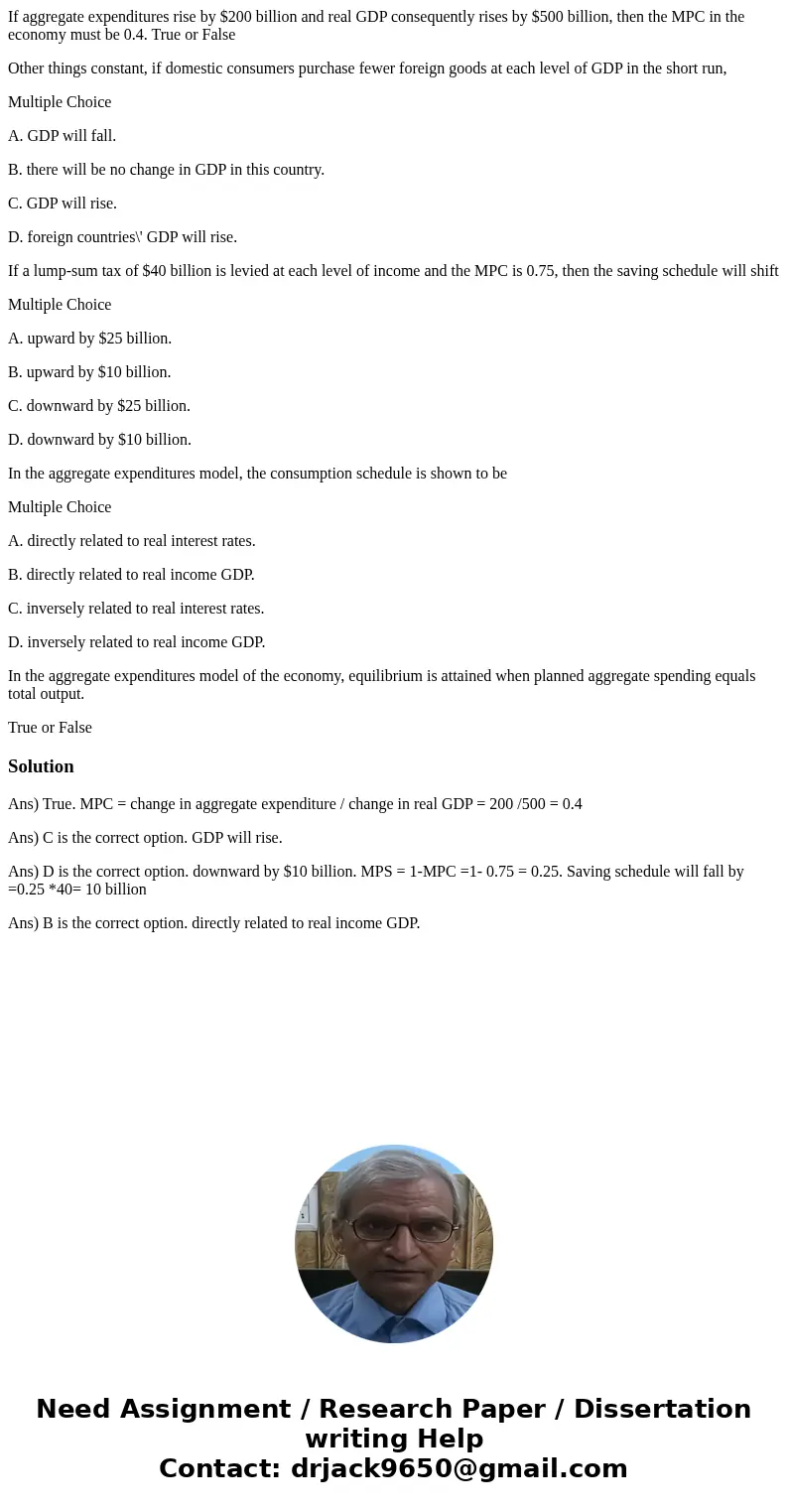If aggregate expenditures rise by 200 billion and real GDP c
If aggregate expenditures rise by $200 billion and real GDP consequently rises by $500 billion, then the MPC in the economy must be 0.4. True or False
Other things constant, if domestic consumers purchase fewer foreign goods at each level of GDP in the short run,
Multiple Choice
A. GDP will fall.
B. there will be no change in GDP in this country.
C. GDP will rise.
D. foreign countries\' GDP will rise.
If a lump-sum tax of $40 billion is levied at each level of income and the MPC is 0.75, then the saving schedule will shift
Multiple Choice
A. upward by $25 billion.
B. upward by $10 billion.
C. downward by $25 billion.
D. downward by $10 billion.
In the aggregate expenditures model, the consumption schedule is shown to be
Multiple Choice
A. directly related to real interest rates.
B. directly related to real income GDP.
C. inversely related to real interest rates.
D. inversely related to real income GDP.
In the aggregate expenditures model of the economy, equilibrium is attained when planned aggregate spending equals total output.
True or False
Solution
Ans) True. MPC = change in aggregate expenditure / change in real GDP = 200 /500 = 0.4
Ans) C is the correct option. GDP will rise.
Ans) D is the correct option. downward by $10 billion. MPS = 1-MPC =1- 0.75 = 0.25. Saving schedule will fall by =0.25 *40= 10 billion
Ans) B is the correct option. directly related to real income GDP.

 Homework Sourse
Homework Sourse